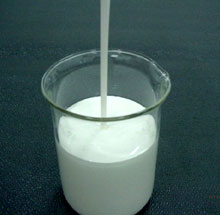 Concerns
regarding the environment as well as the health and safety of
workers and consumers and consumers of solvent-based adhesives
are gaining momentum worldwide. In the United States of America,
for example, the local, state and federal governments are setting
stricter limits on plant emissions and the volatile organic
compound (VOC) content of adhesives. Concerns
regarding the environment as well as the health and safety of
workers and consumers and consumers of solvent-based adhesives
are gaining momentum worldwide. In the United States of America,
for example, the local, state and federal governments are setting
stricter limits on plant emissions and the volatile organic
compound (VOC) content of adhesives.
A
combination of factors including performance considerations,
excise taxes and regulations governing VOCs will motivate adhesive
manufacturers to evaluate advances made in water-based technology
and encourage their customers to consider solventless systems.
Lembaga Getah Malaysia has successfully
developed water-based contact adhesives using modified NR latices.
These novel adhesives are particularly suitable for bonding
to wood substrates.
Processing
All the materials used in the preparation
of the contact adhesives are either aqueous dispersions or solutions.
Preparation of the various adhesives
involves mixing of these aqueous ingredients in the required
proportions by normal stirring. Such waterborne adhesives, being
dispersions, need to be kept agitated to prevent the adhesive
particles from settling out.
Excessive
stirring or pumping rates, however, can cause foaming of the
adhesive resulting in unevenness or gaps in the applied adhesive.
Another factor to consider in the
mixing process is the potential for contamination by dirt or
impurities: filtration may be effected with a system within
the piping or by pouring the adhesive over a filter.
The main advantages of waterbased
adhesives include absence of VOCs and hazardous air pollutants
(HAPs), no explosion risk, reduced generation of hazardous wastes,
lower insurance costs, and no need for solvent recovery or air
pollution control systems.
There are some limitations, however, in processing
waterborne adhesives including increased generation of wastewater
and sludge, may need onsite wastewater treatment, cleaning is
more time and energy intensive, and dry/cure ovens have higher
energy consumption.

|
|




